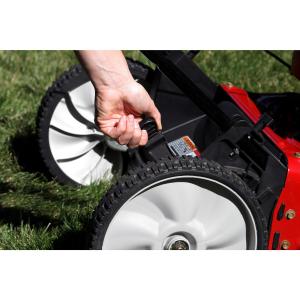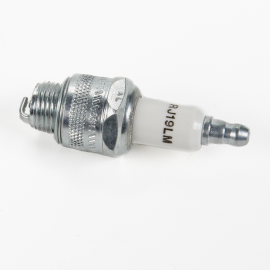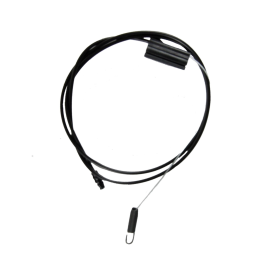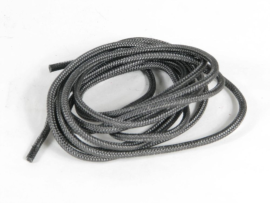- Kenmore refrigerator water filters
- Whirlpool refrigerator water filters
- Samsung refrigerator water filters
- GE refrigerator water filters
- LG refrigerator water filters
- Frigidaire refrigerator water filters
- KitchenAid refrigerator water filters
- Maytag refrigerator water filters
- Kenmore Elite refrigerator water filters
- Estate refrigerator water filters
- GE Profile refrigerator water filters
- Amana refrigerator water filters
- Bosch refrigerator water filters
- Dacor refrigerator water filters
- Electrolux refrigerator water filters
Easy DIY lawn mower repairs


A typical high quality walk-behind lawnmower should provide excellent lawn care for at least eight to 10 years with proper maintenance. Some cheaper models have a life expectancy of four to five years.
The frequency of use, size of your yard, length of your grass, and bumpiness of the terrain can all play a role in a mower’s lifespan. Many lawnmowers have a manufacturer’s expected lifespan in hours as opposed to years.
Many common problems with walk-behind lawn mowers can either be avoided with proper maintenance or executed with only basic DIY aptitude. In this article, we’ll explore the lawnmower issues you’re most likely to run into and the best ways to DIY the repairs.
What’s Wrong With My Lawn Mower?
There are several signs that your lawn mower could have a common malfunction.
Lawn mower won’t start or often stalls
If your lawn mower won’t start or quickly stalls out with use, it likely has to do with the unit’s power source. A faulty or worn battery can fail to start the engine in a gasoline mower or to power the machine in an electric model. Mowers that run on gas could have any number of other issues including no gas in the tank, old fuel, or a clogged fuel cap or fuel line.
Other possible problems include a fouled spark plug or dirty air filter or fuel filter. More expensive parts that can fail include the fuel pump, carburetor, ignition switch, recoil (pull cord starters), or starter solenoid.
If the opposite problem occurs—the mower starts but won’t turn off—it could be a disconnected ground wire or faulty ignition switch.
Pull-cord starter won’t function
When your pull cord fails to start the motor, there are a couple of fairly simple possible fixes. The flywheel brake control engages power from the motor to the cutting blade. If it is accidentally left engaged, the pull cord will not start the mower until it is disengaged.
It’s also possible that the blade assembly is clogged with grass which can prevent the mower from starting. Simply disengage the spark plug and thoroughly clean under the mower.
Lawn mower is overheating
If the heat is noticeable or causes the mower to shut down, it could be that grass clippings and debris have affected the air fins’ ability to move heat away from the engine. Make sure to swiftly address the problem as it could lead to major repairs if left untreated. Often, just letting it cool and wiping away buildup from the fins will allow it to function properly.
Lawn mower cuts poorly or unevenly
Never cut grass when it is wet as it will be cut poorly and may clog the mower. If the grass is unusually long, set the mower higher, move through it more slowly, and cut twice at two different levels. A buildup of grass and debris on the undercarriage of the mower deck can also cause poor performance.
If the mower is cutting unevenly, check that the wheels are all on the same setting and replace any wheel that is damaged.
Dull blades can cause problems and should be sharpened before continuing to mow. If the blade is chipped, bent or otherwise damaged, replace it.
Lawn mower vibrates excessively
When a mower is vibrating excessively, first check for debris lodged in the undercarriage of the mower deck or whether some foreign material is wrapped around the blade spindle. Loose or missing engine mounting bolts; an unbalanced, loose or damaged blade; or a worn drive belt or pulley could also be the culprit.
More significant problems such as a faulty clutch or damaged blade spindle bearing are other, more expensive possibilities.
Lawn mower self-propulsion fails or lacks normal speed
If your mower is running but the self-propulsion fails, the drive belt or drive control cable might be faulty. A stretched or damaged drive belt can cause slippage and poor performance in the self-propelled mode. Inspect the belt or cable and replace it if necessary.
Lawn mower leaks oil or gas
If your lawn mower engine compartment smokes, it is likely leaking oil onto hot engine parts such as the muffler. Let the engine cool and inspect for visual leaks. Check the oil reservoir to make certain it is not overfilled or cracked, and that the cap was secured tightly. Also, in two-cycle engines, an improper fuel/oil mix can cause the mower to smoke.
If you smell gas, immediately shut off the mower and let it cool to prevent fires. It could be a problem with the gas cap, fuel filter, or fuel line. Other more expensive repairs include a faulty carburetor, fuel pump, or fuel tank. Find the source of the leak and repair it before using it.
Lawn mower engine surge
If the engine throttles up uncontrollably in your mower, it probably signals a problem with the fuel system or vacuum leaks. The most likely problems are contaminated gasoline, a clogged gas cap vent, a dirty air filter or carburetor, or a damaged air intake gasket. For more specifics, follow this troubleshooting guide.
Common Lawn Mower Issues and How to Solve Them
Cleaning your mower is critical for gas- or battery-powered models, often preventing many types of repairs and stress on mechanical features. Cleaning grass and debris from metal parts can help prevent corrosion. Regularly sharpening the cutting blade will help with optimal performance and place less strain on the engine.
Regular mower maintenance is especially critical for gasoline-powered small engines. Keeping fresh fuel in the tank, using quality engine oil and changing it regularly, and replacing filters and spark plugs when necessary will help your lawn mower run more efficiently and extend the engine’s life.
Fuel that contains more than 10% ethanol is hard on small engines in lawn equipment and can have a corrosive effect on fuel lines and plastic parts. If you cannot access non-ethanol or 10% or lower ethanol fuel, make sure to use a fuel stabilizer, which prevents corrosion and removes moisture.
In electric mowers with a lithium-ion battery, the power source is often rated for up to five years of use, and replacing the battery could extend your mower’s life for another four or five years.
When deciding whether to repair or replace a mower, always balance the cost of the repair— including whether it is covered partially or fully by warranty—against the age of the machine.
It’s probably well worth making minor repairs well past the three-year mark, but making a significantly costly repair for a lawnmower more than three years old is often not recommended. If the machine is nearing eight years old, it’s usually only worth making minor repairs.
When you need to maintain or repair your lawn mower, many products and parts are available through Sears PartsDirect.
What Tools Will I Need to Fix My Lawn Mower?
Most maintenance and repair work on a walk-behind lawn mower, including its small engine, takes only a handful of tools. Start with a basic socket set, a screwdriver with multiple bits, and some channellock pliers.
Find the proper spark plug socket for your model and a plug gap tool. A putty knife and wire brush are handy for cleaning grass buildup and debris from the underside of the mower deck.
If you’re going to take on regular sharpening of the blade, you’ll need a blade file. It’s easy to unbalance the blade if your skills are not sharp, so a blade balancing tool might be helpful.
If you’re changing oil or draining fuel, see how difficult the fill cap areas are to access and get the right length and diameter of funnel.
Best Practices for Fixing a Lawnmower Yourself
Replacing a lawn mower blade
If you hit a rock or other hard object when mowing, inspect the blade to see if it's bent or chipped; if so, replace it. Blades become dull through usage. You can sharpen it yourself, but make certain not to take more off of one side than the other or you’ll throw the blade off balance. Even if you are a master sharpener, eventually the blade wears down and must be replaced.
Follow these instructions in our DIY repair guide How to replace a lawn mower blade.
Replacing a lawn mower wheel
If a wheel on your lawn mower is damaged or is so worn that the wheel slides instead of rolls, replace the wheel. Follow the instructions in our DIY repair guide: How to replace a lawn mower wheel.
Replacing a lawn mower spark plug
The spark plug ignites the air and fuel mixture in the lawn mower's engine. Replace the spark plug every season or as often as directed in your owner's manual. Also replace the spark plug if it's damaged or fouled by oil, which can make it hard to start the mower or make the mower sputter. See our DIY repair guide: How to replace a lawn mower spark plug.
Replacing a lawn mower drive belt
The drive belt on a lawn mower connects the engine to the gear case, which rotates and propels the mower forward. To replace the drive belt, see our DIY repair guide: How to replace a lawn mower drive belt.
Replacing a lawn mower recoil starter
Pulling the rope on the recoil starter makes the crankshaft spin and helps start the engine. If the crankshaft doesn't spin, the recoil starter is probably broken.
On pre-2014 mowers, just getting to the recoil starter can be difficult, but if your mower has an overhead valve engine produced after 2014, this part is much more accessible. Consult our DIY guide: How to replace a lawn mower recoil starter on an OHV engine.
Replacing a lawn mower carburetor
The carburetor mixes fuel with air and then sends the fuel mix into the engine cylinder where it combusts to drive the piston. If the carburetor is clogged or damaged, the engine receives an improper mixture that prevents it from starting or causes it to run roughly. To replace the carburetor, consult our DIY repair guide: How to replace a lawn mower carburetor.
Sears Has the Parts You Need to Get the Job Done Right
Whether you have a walk-behind lawn mower or a riding lawn mower, Sears PartsDirect stocks maintenance kits and replacement parts for the models of most leading manufacturers. We have the resources you need to complete your repairs and projects yourself.
Symptoms for gas walk-behind mowers
Choose a symptom to see related walk-behind mower repairs.
Main causes: drive control cable failure, worn or broken drive belt, bad transmission, broken drive wheel…
Main causes: engine needs tune up, dirty or clogged carburetor, damaged flywheel key…
Main causes: dirty carburetor, bad spark plug, clogged air filter, engine choke problems, clogged gas cap vent…
Main causes: damaged cutting blade, loose cutting blade, damaged flywheel key, engine needs tune up…
Main causes: stale gas, engine needs tune up, bad spark plug, dead battery, bad recoil starter, faulty safety switch, ba…
Main causes: uneven wheel height settings, damaged wheel, dull or damaged cutting blade…
Repair guides for gas walk-behind mowers
These step-by-step repair guides will help you safely fix what’s broken on your walk-behind lawn mower.

How to replace a lawn mower spark plug
Take a few minutes to replace the spark plug during your lawn mower's annual tune-up or if the spark plug is burnt or cr…
Repair difficulty
Time required
15 minutes or less

How to replace a lawn mower drive cable
The drive cable engages the transmission to spin the drive wheels and move the mower across the grass. Replace the drive…
Repair difficulty
Time required
60 minutes or less

How to replace a lawn mower starter rope
These step-by-step instructions show how to replace a broken starter pull rope on a walk-behind lawn mower.…
Repair difficulty
Time required
30 minutes or less
Articles and videos for gas walk-behind mowers
Use the advice and tips in these articles and videos to get the most out of your walk-behind lawn mower.

Do these 5 things this spring for a lawn that's healthier all summer.…

Learn about all the convenient features on our Sears PartsDirect website that make your parts purchases easier.…

Get answers to frequently asked questions about Sears and Sears PartsDirect.…